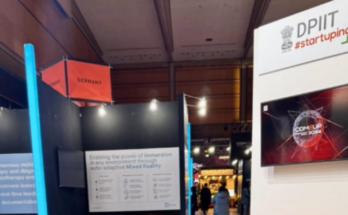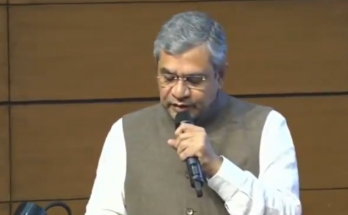New Delhi: With demand for Indian animated content growing among global audiences, especially with children who are a significant consumer group for animations like cartoon shows, a home-grown animation brand Cosmos Maya, the creator of popular children’s show ‘Motu Patlu’, shares that it is an exciting time to be in the animation business.
The animation studio and Arbaaz Khan Productions have recently come together to adapt the blockbuster franchise ‘Dabangg’ into an animated series. This news comes right in line with the tenth anniversary celebration of the film franchise that introduced the character of Chulbul ‘Robin Hood’ Pandey for the first time in 2010. The show will feature animated avatars of all of the franchise’s characters. Targeted at kids and family audiences, Season 1 will be launching in summer 2021.
Anish Mehta, the CEO of Cosmos Maya – whose content is airing or streaming in over 150 countries on major OTT or TV platforms in 18 languages, speaks to IANSlife about Indian animation and how promising its future is, globally. Excerpts:
Q: Tell us about the making of some of your most popular IPs.
A: Our idea behind most of our content output is to ensure familiarity with novelty. Implementing insights, we derive from everyday familial and social life that are relevant for kids in a package that adapts to changing sensibilities and requirements of our young audience. For example, naughtiness and clumsy behaviour is something which many kids expect to be reprimanded for and is often the subject of most kids’ animation, so ‘Motu Patlu’, showing on Nick and Voot Kids, subverted the trope by providing a set of adults indulging in such behaviour instead.
‘Selfie with Bajrangi’ streaming on Disney TV and Disney+ Hotstar takes the fantastical power of invisibility and shape-shifting and provides the lead character a friend in Bajrangi, a junior version of a revered god who is known for such powers. We largely credit our business spread and market share of over 60 percent to this core philosophy. We are always looking out for arenas where we can be first innovators, such as the Dabangg animated series coming out on Disney+ Hotstar soon, which will be one of our first projects and a step for the Indian animation business towards working with established Bollywood IPs and provide them a creative and lucrative extension.
Q: How exciting is it to be in the animation business right now? How has it picked up over the years?
A: Our company is in the remarkable position where we have only witnessed but been a significant catalyst to the growth of the animation and post-production industry in India. We have seen the transition of this market from a solely outsourcing-based service provider sub to and IP-rich industry. Additionally, more and more media outlets and business entities have come to realise that this medium helps them accomplish greater storytelling and advertising potential, as it works perfectly for the zaniest of narratives and visual mandates.
Animation is simply fun, being one of the first visual interfaces a child has for the world, and it is a sector that has proved resilient in the face of global calamities, which reflects in the performance of the industry despite an entire locational shift in the workspace of people involved. The projected growth of the sector is expected to reach almost $26 billion in FY21, and we strive to make the most of it.
Q: Children are huge consumers of animated content. How do you create content around them?
A: We have a think tank comprising of people from the creative, business, sales and executive departments and concept artists, who come together to discuss and derive actionable insights from everyday life and how kids are adapting with the times. How life reflects in their worldview and behaviour, and what kind of ideals their parents as the content moderators want to inculcate in them. Our show ‘Titoo’ on Pogo takes the story of an everyday boy akin to ‘Dennis the Menace’, and delivering it in a tone and language relevant to kids today in a slice-of-life narrative. ‘Bapu’ and ‘Gadget Guru Ganesha’ take a similar setup as ‘Selfie with Bajrangi’ to provide known and respected figures as best friends/role models to the lead characters and helping them navigate through, discussing relevant topics such as social responsibility in a non-pedagogical manner.
Q: Please tell us about animation as an art form.
A: Two things render animation its artistic status – that it adapts to nearly every creative requirement that a content creator may have of its narrative, and that it’s limited only by their imagination. Animation lends itself to the most randomly imaginative narratives and visual detail and nearly every genre of storytelling in a manner that is adaptive, conducive and cost-effective.
Q: What’s the global appeal of Indian animated content as of now? Animation is mostly thought of as Japanese or Korean.
A: Our show ‘Eena Meena Deeka’ can be called to the stand to answer this. A non-dialogue show about three chickens and their battle of wits with a hungry fox, is one of our best performing shows in over 80 countries, and is one of the most highly viewed shows in Europe and Latin America. ‘Vir: The Robot Boy’ has nearly 11 billion views globally on our YouTube multi-channel brand WowKidz. From long-format to short-format content, Indian animation is catering to audiences across the world and is steadily creating its own niche. If the demand for Indian animation is going anywhere, it’s up.
Q: Some new trends you may be observing in the industry or consumer group?
A: Thanks to the near simultaneous growth of video-sharing websites, OTT streaming and e-commerce, the issue of piracy is very nearly taken off, with financial losses on that front reducing significantly. Moreover the Indian industry is moving fast to make a foothold in the licencing and merchandising market which is the largest profit driver for the global animation industry. Cosmos-Maya is taking active steps in that direction as well, with advertising-funded modules being discussed with brands. Animation is being explored in detail as an effective communication touch point for business consumers.




